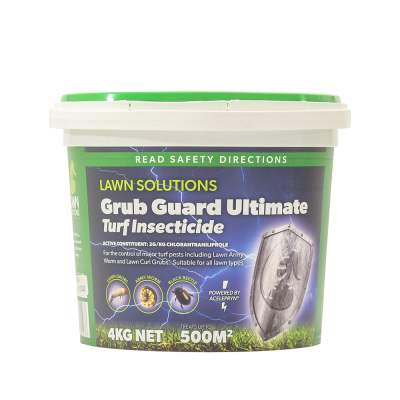Did you know that now is the best time of the year to start getting your lawn into shape? Whether you need to give your lawn some much-needed TLC or want to start fresh with a new lawn, spring is the ideal time to get started!
Why is Spring an Ideal Time to Fix Your Lawn?
With temperatures set to warm up over the coming weeks our lawns will start to actively grow again. The temperatures are usually warm enough for new growth, but not hot enough that the grass will be under stress from the scorching summer sun. This makes it an ideal time to focus on repairing any damage that may have occurred over winter or address any underlying issues the lawn may be facing.
Should I Remove Weeds from My Lawn in Spring?
If there are weeds growing in your lawn, it is best to treat them as soon as possible to help prevent them from spreading further. Treating weeds now will also limit the competition your lawn will face, allowing the turf to grow stronger and thicker quickly.
When treating common broadleaf weeds like Clover and Bindii, you can look at using a broadleaf herbicide like All Purpose Weed Control. If you are not sure what weed type you have growing in your lawn, check out our Ultimate Weed Guide for identification and removal tips here.If you want to get ahead of the game and prevent weeds before they start to appear in your lawn, look into using a pre-emergent herbicide like Oxafert and Oxafert Plus.
How to Get the Most Out of Your Fertiliser Application This Spring
When applying fertiliser to your lawn this spring, timing is key. If your application is too early, before temperatures start to warm back up, your lawn won’t be growing at a fast enough rate to use the fertiliser effectively.
So, when should I apply fertiliser to my lawn this spring? The answer is when the temperatures are consistently warmer and when you have noticed that the lawn has begun to actively grow again.
If you are wanting a granular fertiliser, our Lawn Solutions Premium Fertiliser, available in both a 4kg bucket and a 10kg bucket. This fertiliser contains both a fast and slow-release granule to give your lawn a good upfront boost heading out of winter dormancy, and also contains a slow-release granule that will continue to feed the lawn for 12 weeds for a sustained boost. This fertiliser contains a balanced ratio of nutrients and trace elements to encourage strong growth and rich colour.
If you prefer to use liquid lawn care products, a great fertiliser option is Exceed Liquid Fertiliser, available in both a 2L Hose-on bottle and a 2.5L concentrate.
Should I Aerate My Lawn this Spring?
Over the last six months we have been experiencing high amounts of rainfall. With this and increased cloud cover, it has made our lawns sit damp for longer periods of time. When this occurs, with combined foot traffic, the soil underneath can become compacted. This compaction can make it difficult for air, water and nutrients to reach the roots of your lawn. To help alleviate this compaction, it is recommended to aerate your lawn.
Aeration typically involves using a garden fork, tyne aerator or aerator sandals to create space within the profile. When aerating with a garden fork or tyne aerator, simply drive the fork into the profile and give it a good wiggle back and forth to fracture the soil profile. Repeat this across the whole lawn. If you have a larger area that is too big to aerate by hand, you can look at hiring a mechanical aerator.

This process will help your lawn become healthier, stronger and thicker.
Do I Need to Renovate My Lawn This Spring?
If you’re looking to get drastic results with your lawn this spring or are needing to give your lawn some extra TLC, look at renovating your lawn this spring. Lawn renovations can help improve soil quality, compaction, improve your lawns levels, and remove thatch, all improving the all-round appearance of your lawn.
Typically, lawn renovations will start off with removing all weeds from your lawn. A few weeks after this and when temperatures are consistently warmer, you can then scalp or dethatch your lawn, aerate, fertilise and top dress. Initially after this process your lawn won’t look the best, but over a few weeks, your lawn will improve drastically!
For more information on how to complete a lawn renovation, check out our Lawn Renovation video series here.

For more lawn care tips and advice, make sure you check out our other lawn care blogs here.


